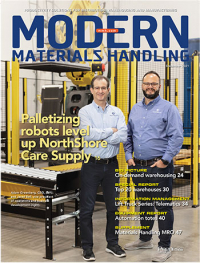MRO technicians: Opportunity gained
In all likelihood, the future profile of maintenance technicians is not what you’re thinking. At least, that’s what two women at GE Appliances say. This is their story of how they got here.
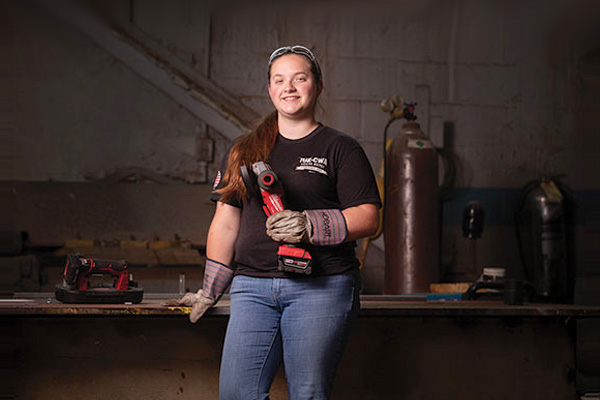
And now for some good supply chain news.
The new generation of maintenance technicians is beginning to take its place. And the new techs don’t look anything like the ones who dominate maintenance teams today. Let me introduce you to Aliza Schmitter and Alivia Slucher.
Both are twenty-something mothers. Neither started out thinking they wanted to be a tech. But both are happy to be where they are right now.
“When I started out, I thought this was a path to becoming an engineer. I had no interest in getting dirty,” explains Schmitter. “Now the getting dirty part doesn’t matter. What I do is fun and exciting and keeps my brain thinking all the time. I never know what’s coming on any day.”
Slucher says she has always enjoyed working with her hands. And the idea of being a maintenance tech was a whole lot more appealing than a general education degree. “Mechanics are in my family. It’s easy to get into it and love it,” says Slucher.
Here’s the story of how these two new generation techs got to the spot they now find themselves at GE Appliances, a Haier company, in Louisville, Ky. It’s also the story of how GE Appliances is proactively developing its workforce in these turbulent times.
The bigger picture
It’s important to note upfront how remarkable these two women’s views of their current positions are. We’ve all heard about this being the year of the great resignation. And many surveys about job satisfaction show that roughly 50% of people want to change jobs. You may even be part of that. Schmitter and Slucher are not.
But to that point, finding these two new techs, and others like them, is a process that involves resources and commitment by GE Appliances and beyond. Just ask Valorie Hughes, senior manager of supply chain talent development for GE Appliances.
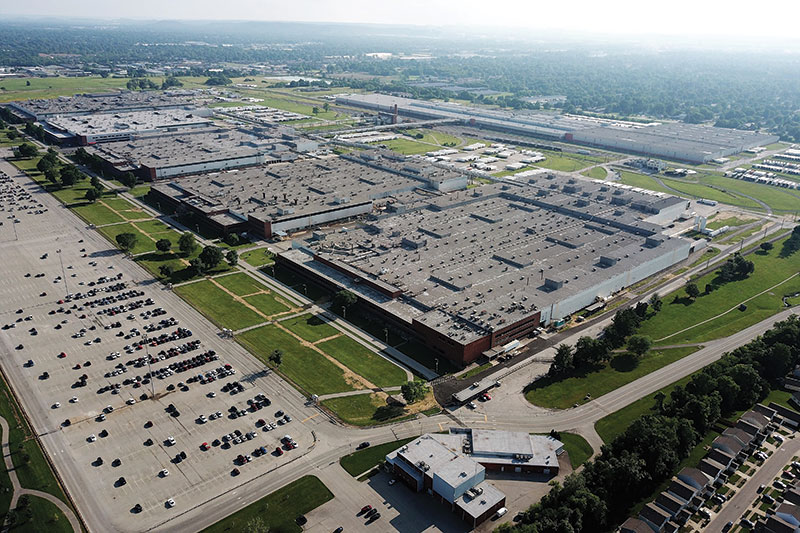
Hughes explains that since 2016, GE Appliances has invested $1 billion to create 3,000 jobs at its plants and distribution centers. “In that time, we have rebuilt the skilled trades pipeline to support our investments in advanced manufacturing and the needed infrastructure to support other manufacturers in our region and supply chain,” says Hughes.
“GE Appliances has a philosophy to develop its own talent,” says Julie Wood, senior director of corporate communications. “We can’t expect others to solve our problems and develop the right talent for us,” she adds.
As it turns out, that is a prescient move by GE Appliances. For almost 20 years now, Deloitte and The Manufacturing Institute have been tracking the manufacturing industry’s development including its skills shortage.
In its most recent report, the two state that in 2020 the manufacturing industry netted a loss of 578,000 jobs, a figure that is exactly inverse to six years of job gains in manufacturing. Furthermore, nearly half a million jobs have remained open in manufacturing. “One of the top challenges manufacturers face today remains the skills gap in U.S. manufacturing,” according to the 2021 report.
That was followed on by three key bullet points:
- U.S. manufacturing is expected to have 2.1 million unfilled jobs by 2030.
- Diversity, equity and inclusion is an imperative for manufacturers, and
- Manufacturers should create pathways to tomorrow’s jobs today.
While Hughes has absolutely no control over the first bullet point, she does over the other two. Hope you noticed the specificity of her title. It underscores the importance of supply chain talent development at the company.
Now, Modern Materials Handling doesn’t generally delve into the relationships that human resource departments have in companies. But it does matter here.
Hughes reports to HR but has a dotted line to the supply chain group. That’s not a common arrangement in U.S. companies today. Furthermore, she works quite closely with James Atkinson, senior manufacturing technical trainer to upskill the workforce in Louisville through Kentucky FAME or KYFAME.

As Atkinson explains, the national organization known as FAME, or Federation for Advanced Manufacturing Education, is a part of The Manufacturing Institute, the educational arm of the National Association of Manufacturers.
“The FAME model,” says Atkinson, “leverages a work/learn framework to weave technical knowledge, professional behaviors and distinct manufacturing core exercises into a focused co-op experience.” See the diagram on page 53 for more details on what Atkinson calls the three-legged stool of the FAME curriculum.
At this point, FAME has 32 chapters in 12 states with more than 400 company partners. Since 2010, the program has 1,300 graduates across manufacturing, and 85% of graduates proceed to direct employment with the sponsoring company.
As you may have already guessed, Atkinson is the president of the Louisville chapter of KYFAME. More than 20 companies belong, some with less than 100 employees. He says the program has graduated 84 students since 2017. Fourteen of those went to work for GE Appliances with 12 still there.
On the ground level
Quite simply, building the new generation of techs is not about boiling the ocean, explains Atkinson. “We find and develop techs one person at a time,” he adds.
But it is a demanding process that includes classroom time and on-the-job time. The program typically takes four years to complete. In that time, the student spends two years in a classroom studying for an associate’s degree in Applied Science in Industrial Maintenance Technology – Advanced Manufacturing Technician Track.
Those classes are held at Louisville’s Jefferson Community & Technical College. In 2020, the school opened a $24 million, 50,000-square-foot Advanced Manufacturing and Information Technology Center. The state of Kentucky committed $15 million to construction of the center. Private and college contributions made up the balance.
“I’m encouraged to see both the public and private sectors working together to come up with meaningful solutions,” says Jim Lancaster, chairman of Jefferson’s Board of Directors and president and CEO of stretchwrapper supplier Lantech. “Millions of dollars are leaving Louisville and Kentucky because businesses can’t find those with the skill sets needed to compete in the 21st century marketplace,” Lancaster added at the time of the groundbreaking in 2017.
In addition to classroom time two days a week, students must complete 8,000 hours of paid, on-the-job training the other days of the week. That, says Atkinson, allows GE Appliances to train the techs in exactly the way they want and on the equipment they will work on when they become employees.
One other important point: GE Appliances, in addition to paying the students for their 8,000 internship hours, ensures that no graduate of the program has any educational debt.
When asked his three favorite points about the program, Atkinson said this:
- The program provides options for people to have access to higher education debt free,
- Students get to see practical, hands-on applications of their class learning, and
- Graduates are well rounded techs before they start full time.
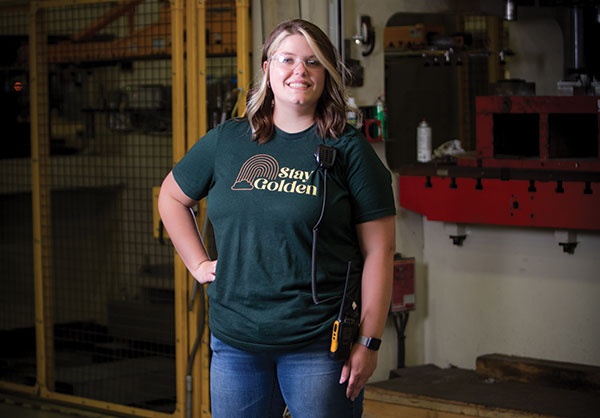
sets in the maintenance technician world.
There’s also a major benefit to the company, says Wood. GE Appliances is a consumer products company that needs to be as close as possible to the consumer. This training immersion allows GE to develop employees who are in touch with both their work life and their home life, making the company an even better appliance manufacturer.
What it all means
Talk to Schmitter and Slucher, and they are both quite pleased with where the program has landed them.
Schmitter completed the program two years ago. At that point, she also received her Journeyman’s card, the highest recognition of skill sets in the maintenance technician world.
Slucher is halfway through the program. So, she has her associate’s degree and is working to complete her final 4,000-hour internship over the next year and a half for her Journeyman’s card.
They both agree that the key to success here is being willing to say when you don’t know something and let others teach you. It’s also about facing challenges and learning to overcome them.
All of that is great, but how do they feel about breaking into what some might call an old boy’s club? And doing it in their early 20s?
“Don’t let gender put you in a box. This is not a path for everyone. But I know I’m better trained than some men,” Schmitter says.
“I was intimidated at first,” says Schmitter, who is 25, married and a mother of a two-year-old. “But we’ve become friends over time, and they are some of the best people I have ever met. It sounds like a cliché, but my guy friends at work are like family. They really are. “
Slucher, who is 20, single and has a four-year-old son, says when she bought her first house a year ago, her coworkers had plenty of advice on getting through the process. “Everyone was so supportive,” she says. “It’s that way every day,” she adds.
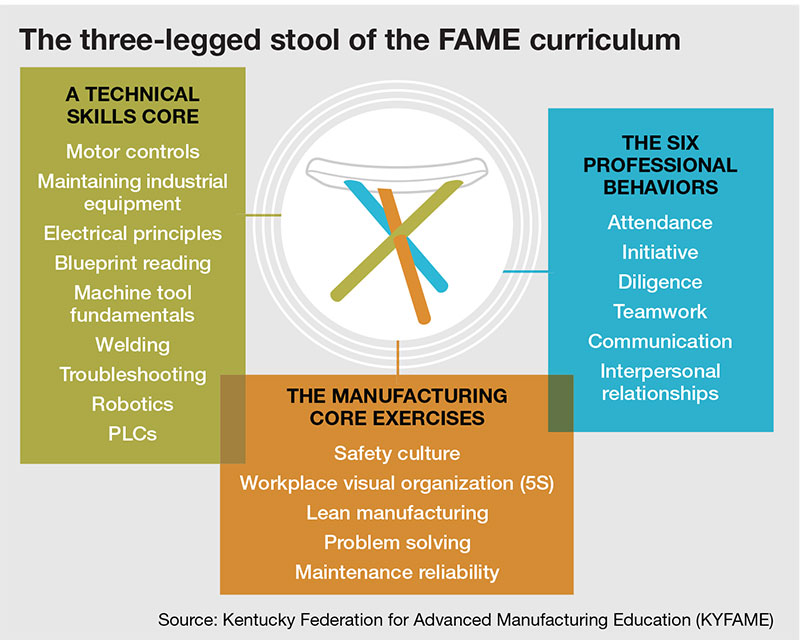
Without this program, says Schmitter, “working as a maintenance tech would have been an opportunity missed for me.” And in coming years, others will likely echo that sentiment.
Or as Hughes put it, “if you tell a fish to climb a tree, it will spend its entire life not being successful. This program for maintenance techs has taken creative solutions and helped people to find good jobs. That’s a powerful combination.”

Article Topics
MRO News & Resources
Learn from lift truck service history Avidbots showcases autonomous cleaning robots Traka exhibits modular lockers MRO Survey: Finding and keeping the best technicians 60 Seconds with Jordan Taft, Welder at Raymond Corporation Maintenance, Repair and Operations: Understanding the true condition of the equipment Predictive maintenance: Ready to launch More MROLatest in Materials Handling
IFR: robot installations by U.S. manufacturing companies up 12 percent last year Geek+ and System Teknik deploy PopPick solution for pharmacy group Med24.dk Beckhoff USA opens new office in Austin, Texas Manhattan Associates selects TeamViewer as partner for warehouse vision picking ASME Foundation wins grant for technical workforce development The (Not So) Secret Weapons: How Key Cabinets and Asset Management Lockers Are Changing Supply Chain Operations MODEX C-Suite Interview with Harold Vanasse: The perfect blend of automation and sustainability More Materials HandlingAbout the Author
Subscribe to Materials Handling Magazine

Find out what the world's most innovative companies are doing to improve productivity in their plants and distribution centers.
Start your FREE subscription today.
April 2024 Modern Materials Handling

Latest Resources


